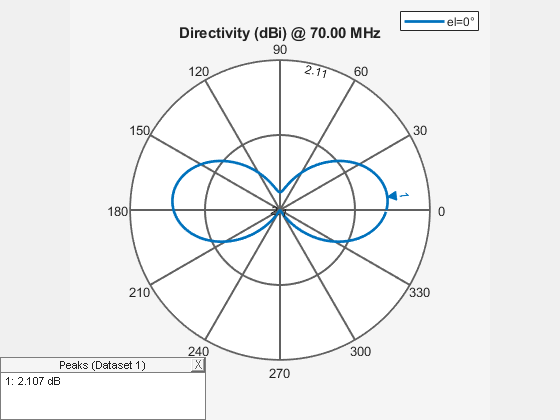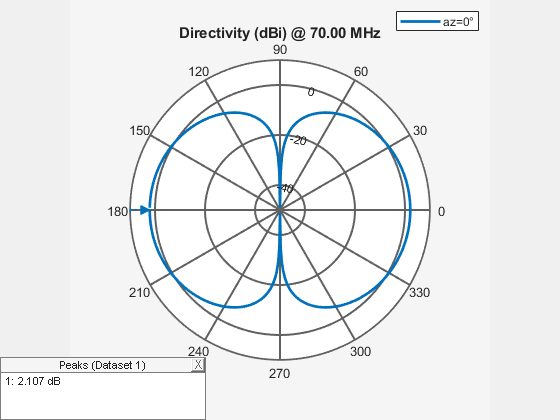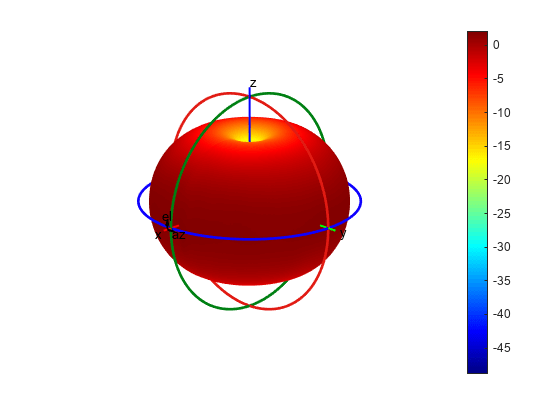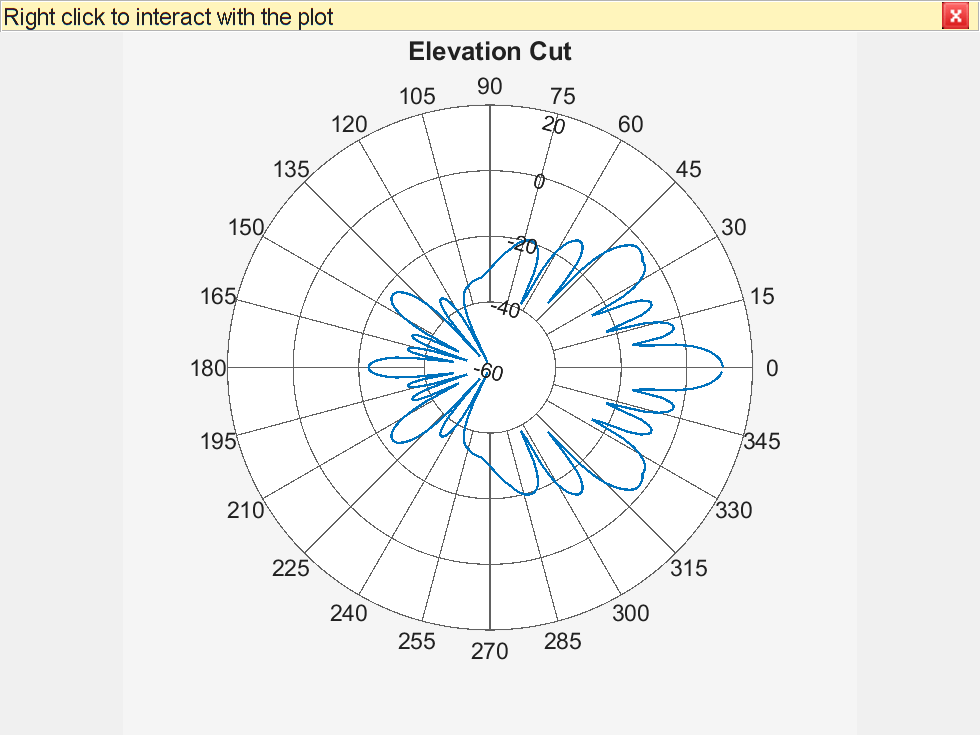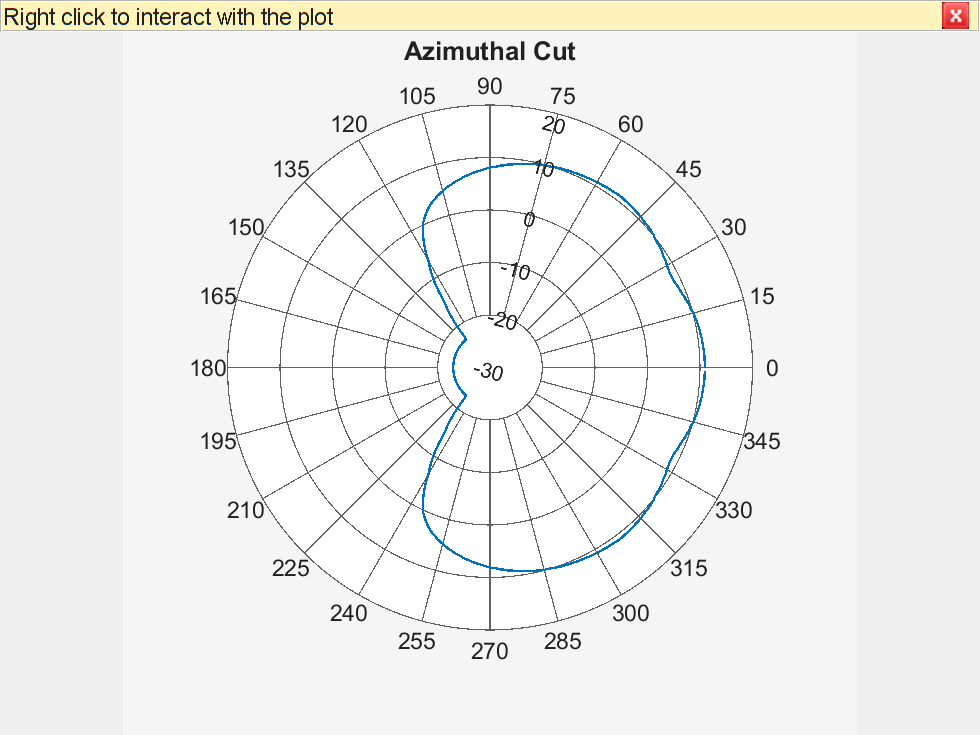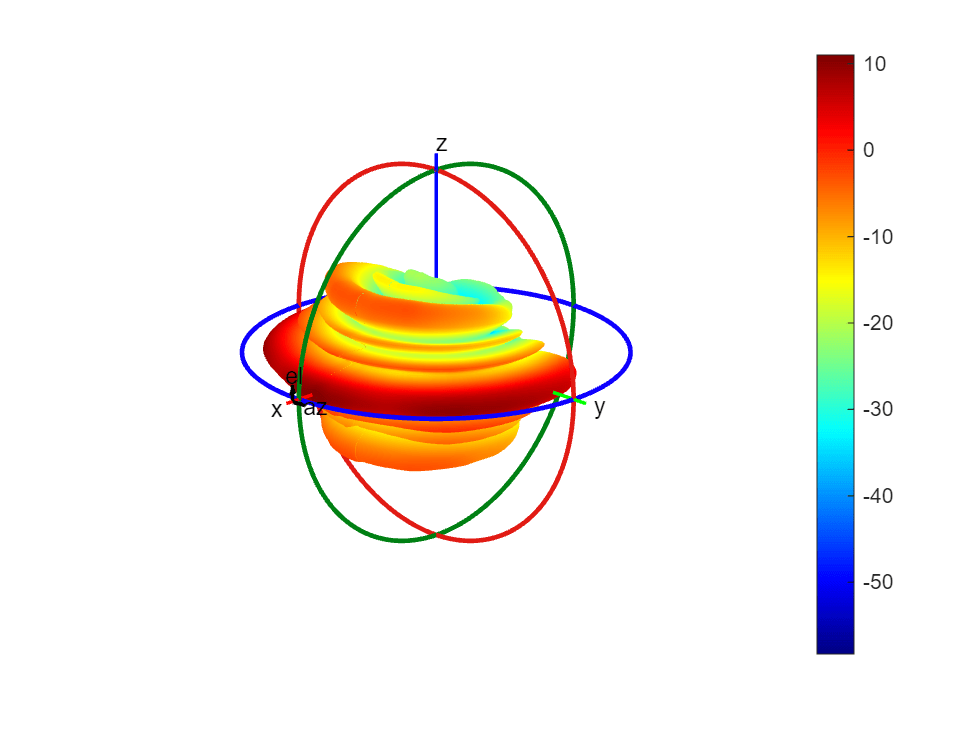patternFromAI
Reconstruct 3-D radiation pattern of antenna or array from two orthogonal pattern slices using AI
Since R2024a
Syntax
Description
Note
To use the patternFromAI function, you need a Deep
Learning Toolbox™ license in addition to the Antenna Toolbox™ license.
patternFromAI(
plots the approximate 3-D radiation pattern reconstructed from the magnitude and angle data
of input orthogonal slices magVertSlice, angleVertSlice, magHorizSlice, angleHorizSlice)vertslice and
horizSlice.
[
returns the reconstructed pattern as a matrix along with the vectors of the horizontal and
vertical angle values in degrees. For the matrix p3D, vertAngleOut, horizAngleOut] = patternFromAI(___)p3D, the number of
rows/columns correspond to the number of elements of vertAngleOut /
horizAngleOut.
[___] = patternFromAI(___,Name=Value)
provides a way to specify customization and tuning options, such as the angle convention,
additional minimum and maximum magnitudes for slice normalization, and pattern plot options
using one or more name-value
arguments.
Examples
Input Arguments
Name-Value Arguments
Output Arguments
Version History
Introduced in R2024a
